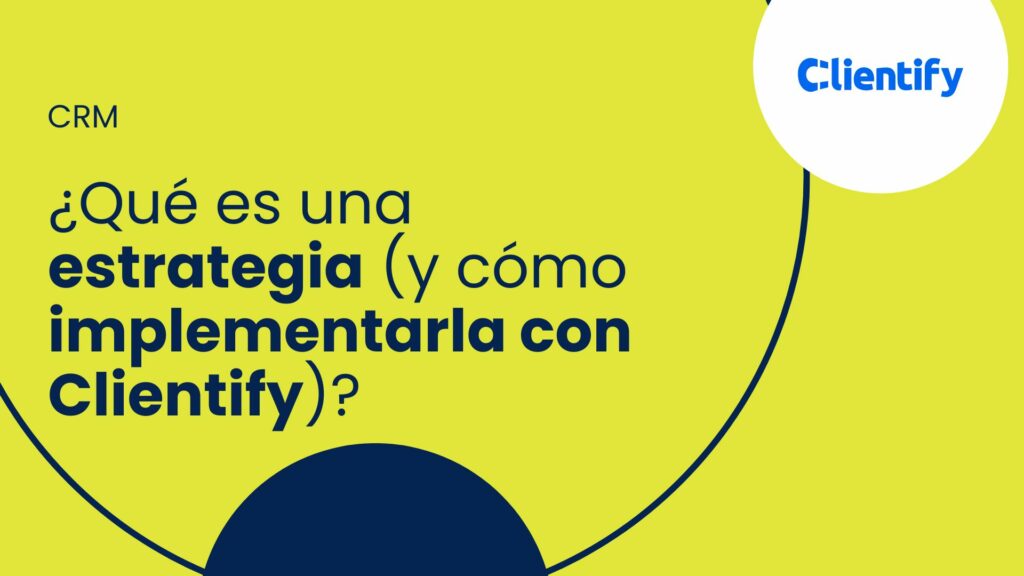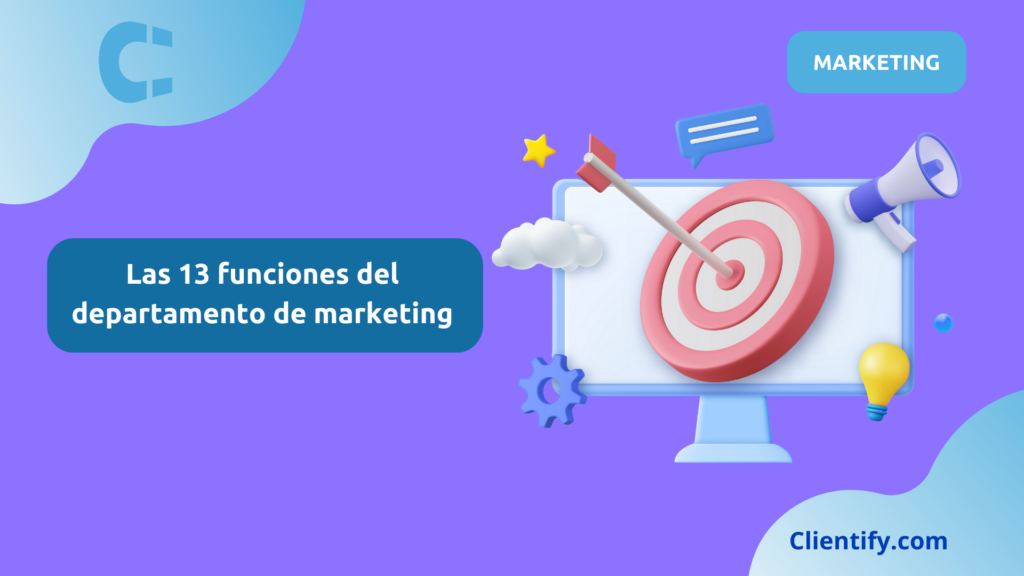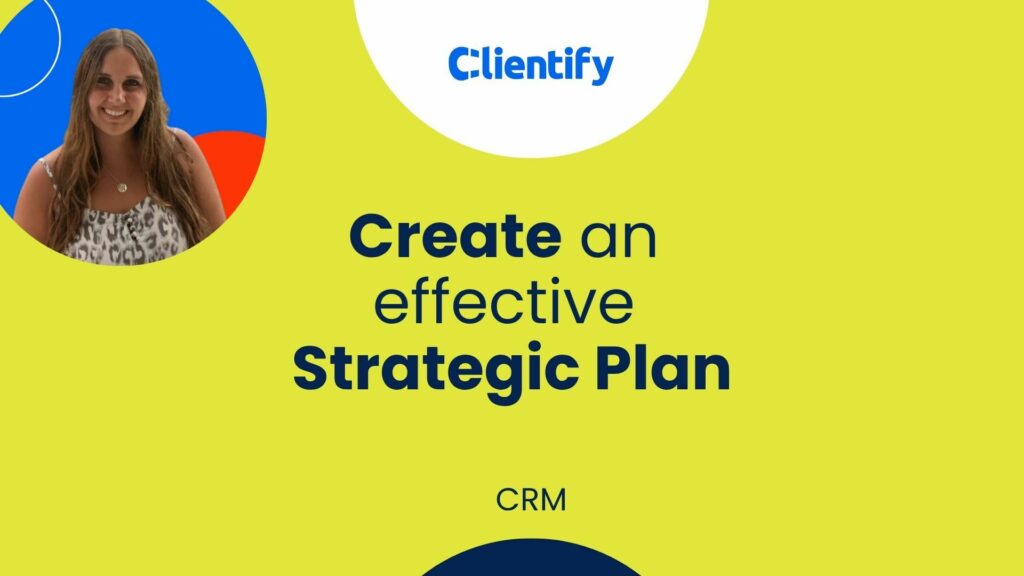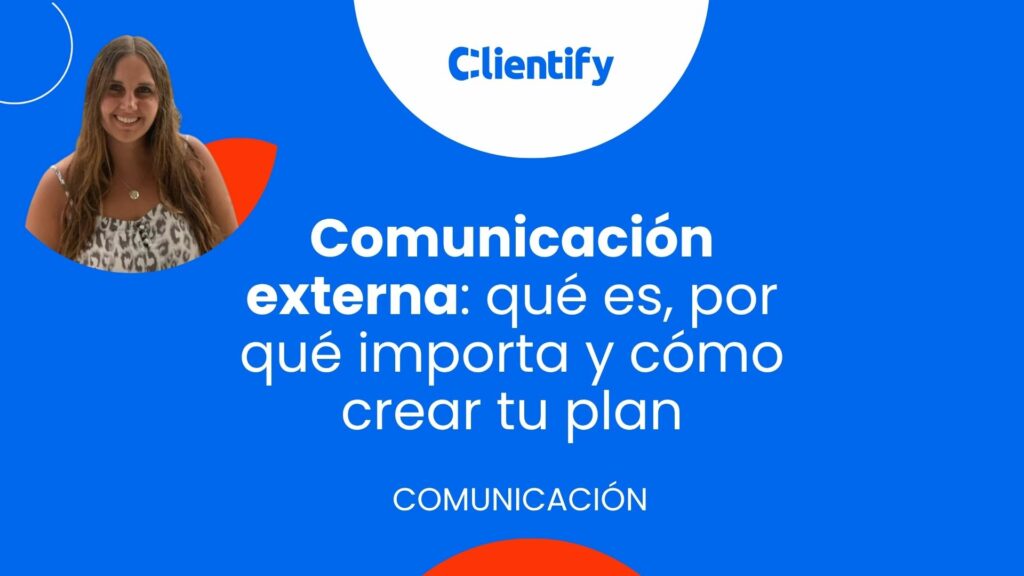When you hear the word strategy, it sounds like a big book from college, drawings on a blackboard or a word your boss throws around to fill meetings.
But the reality is that without a strategy, no business can last for two TV seasons.
In marketing, sales or even in how you respond to your customers, strategy is the map that tells you where you’re going and how you’re going to get there without taking 40 extra turns.
But here I bring you the good news, in this post you are not going to read boring theories:
I’m going to show you what a strategy really is, what types exist, clear examples and how you can apply it so that your business stops improvising and starts to grow with head.
What is a strategy?
Here goes:
A strategy is the plan that sets the path to achieve an objective.
They are not single tasks or ideas in the air, but rather a set of conscious decisions about what you want to achieve, how you are going to achieve it and with what resources.
For example:
- Business strategy: expand into a new market by adapting product, prices and channels.
- Marketing strategy: increase leads by 30% in 6 months, using email campaigns, automation and targeted ads.
- Sales strategy: close more deals by reducing the sales cycle with a CRM.
Manage everything from one place: engage, automate and sell with AI
Forget loose tools, centralize communications, sales and marketing with Clientify.
Activate your 14-day free trial and scale without complicating your life.
Why is it important to have a strategy?
Because without a strategy you are improvising. And when you improvise in marketing, sales or customer management, you usually waste time, money and opportunities.
A good strategy gives you:
- Clear direction: you know where you are going and what to prioritize.
- Better use of resources: you avoid shooting everything that moves.
- Faster decisions: you choose based on data, not hunches.
- Measurable results: you can adjust when something is not working.
Types of strategy (marketing, sales, communication, loyalty)
Not all strategies are the same and do not serve the same purpose.
In a company, it is normal to combine several depending on the objective: some are focused on attracting customers (marketing), others on closing sales, some on how to communicate and, finally, those that seek to build customer loyalty so that they do not leave.
Let’s take a look at the main types of strategy that every company should master:
Marketing strategy
Marketing strategy defines how to attract and convert leads into opportunities. It includes decisions about channels, messages and tactics to reach the right audience at the right time.
Sales strategy
Sales strategy focuses on how to close more customers: from funnel design to pipeline management and relationship management. It is key to align the team and optimize processes.
Communication strategy
Without a communication strategy, messages get lost and customers forget about you. This is where how and where you talk to your audience comes into play: email, chat, networks or WhatsApp.
How to create a strategy step by step
Once you have the idea, you have to execute it. And for that you need a tool that implements, in a single place, the communication, sales and marketing strategies of your company.
Tip: I recommend you take advantage of the 14 free days you have in Clientify to at least have a clear idea of the execution of the strategy.
Step 1: Define your objectives
As we mentioned in another post, the first thing you have to do is to define your objectives. And once you have determined them, Clientify allows you to assign, to the people in charge, the activities they have to perform to achieve them.
Everything starts with a clear and measurable objective (e.g. 20% increase in sales in 6 months). Use SMART criteria to avoid ambiguous goals.
Step 2: Analyze your current situation
Make a diagnosis: market, competition, internal resources and weaknesses. A SWOT analysis (strengths, weaknesses, opportunities and threats) gives you a complete picture.
Step 3: Choose tactics and channels
Decide how you are going to achieve these objectives: digital marketing, inbound, WhatsApp, email, calls, social networks, etc. Adjust according to your audience.
Step 4: Allocate resources and responsibilities
Define who does what and with what budget. This is where a CRM like Clientify helps you organize teams and automate tasks.
Step 5: Execute, measure and adjust
Implement your plan, measure results with KPIs (sales, leads, cost per acquisition, etc.) and adjust according to the data. A strategy without monitoring remains on paper.
How to apply the strategies according to your sector?
Each organization has its own particularities, but Clientify is a platform where you can adapt all kinds of strategies.
Education and training:
If you work in an academy or educational institution, you can create strategies to attract students with forms integrated into landing pages; and today you have Clientify’s AI available to design these landings.
Just think that with a little information about who your students are, what course you are promoting and what you want to achieve, in seconds you will have your landing page created.
Also keep in mind strategies focused on attracting potential students, automating enrollment tracking and improving communication with students via email or WhatsApp.
Industry and manufacturing:
With Clientify you can create quotes and automate follow-ups when the prospect opens, accepts, rejects or pays through your quote.
Strategies to optimize B2B sales processes, digitize distributor management and maintain an updated pipeline of opportunities.
E-commerce:
If you have an ecommerce, you can segment contacts according to their buying behavior, activate personalized campaigns by product category and use automations for abandoned carts or seasonal promotions.
Strategies focused on increasing conversions, recovering abandoned carts and building customer loyalty with personalized campaigns.
IT, telecommunications and software:
With this platform you can execute lead nurturing strategies with automated content streams, launch free trial campaigns and create calendars for customers to schedule their own demo.
Strategies for managing technical leads, nurturing long leads and coordinating complex sales teams with automations.
Marketing agencies:
If you have an agency, you can join the Partner program and manage all your clients’ communications, sales and marketing from Clientify, duplicating flows, campaigns, forms, etc. and adapting them to each client.
Strategies that combine customer acquisition, project management and multichannel campaign automation from a single CRM.
Travel agencies:
You can create seasonal promotions, do post-trip follow-ups, segment by interests, automate mailings with offers and measure which campaigns generated the most bookings.
Strategies focused on follow-up of bookings, upselling of services and fluid communication with travelers at each stage.
Health, beauty and wellness:
Automate appointment reminders, segment your contacts by type of treatment and measure post-service satisfaction through personalized emails.
Strategies to build patient and customer loyalty with automatic reminders, online booking and appointment tracking.
Professional services:
If you offer advisory, consulting or professional services, you can apply loyalty strategies by viewing the customer’ s entire history to personalize your contact as much as possible, automating follow-ups and sending valuable content periodically.
Strategies oriented to budget management, project control and improvement of customer relations through automated flows.
Tools to execute your strategy
Having a well-defined strategy is useless if you don’t have the right tools to implement it. This is where an all-in-one CRM like Clientify makes the difference, because it allows you to go from theory to action in minutes:
Multichannel Inbox
Centralize all conversations (email, chat, networks, WhatsApp) in one place, the inbox. This way you avoid losing messages and keep control of every interaction.
The inbox is a shared inbox with your team that allows you to centralize all channels in one.
Once you try it, you won’t be able to live without it.
WhatsApp Marketing
Connect directly with your customers on the channel they use most. Launch mass campaigns, create chatbots and automate responses without leaving the CRM with WhatsApp marketing.
Marketing and sales automation
Create automatic flows that capture, nurture and convert leads without your team having to be on top of every task. Ideal for scaling without multiplying resources.
Chatbot with AI
Serve your customers 24/7, answer frequent queries and capture leads even when your team is not available by creating an AI-trained Chatbot in your company in minutes.
Dashboards and analytics
Measure every step of your strategy with customized dashboards: closed sales, active campaigns, loyal customers.
Real-time data helps you decide faster.
Frequently asked questions about strategy
What is the difference between strategy and tactics?
Strategy sets the general path to achieve an objective, while tactics are the concrete actions you execute on a day-to-day basis. Example: strategy = increase sales by 30% in six months; tactics = launch WhatsApp campaigns or automate follow-ups.
How to make a simple strategy for an SME?
Start by defining a clear objective, analyze your situation, choose the most effective channels, allocate resources and measure results. With a CRM like Clientify you can centralize communications and automate processes to make your strategy easy to execute.
What types of strategy exist in a company?
The most common are marketing (attracting customers), sales (closing more deals), communication (maintaining effective contact) and loyalty (retaining customers). Each business combines several depending on its objective.
What tools help to execute a strategy?
A CRM with integrated modules such as multichannel Inbox, WhatsApp Marketing, automations and chatbots with AI. These tools allow you to put your strategy into practice and measure results in real time.
You see…creating an effective strategy is an ongoing process and requires your analysis, planning, implementation and evaluation.
But the important thing is that today you have available a platform like Clientify, which allows you to do all that (and much more) in a centralized and unified way.
Take advantage of our 14-day trial period and use our functionalities to implement your strategies.




